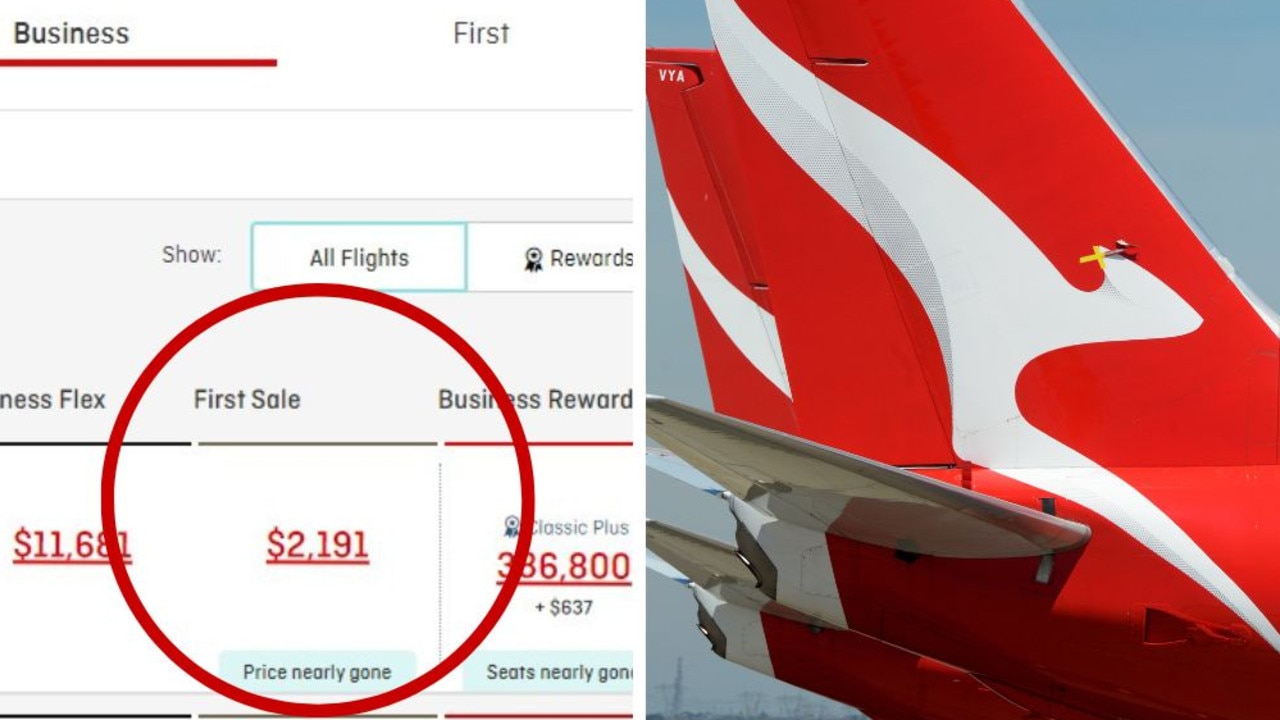Travel money cards were ranked in order of highest value of USD/ euros after fees and conversions
HERE’S a list of the Top 10 best travel money cards to use when holidaying in the United States and Europe, revealing the least withdrawal fees.
WHEN it comes to travelling there’s lots to tick off the “to-do” list and more often than not, travel money cards become an afterthought.
But don’t be lazy, that’s the advice from comparative site finder.com.au’s money expert Bessie Hassan, who says by settling for your standard credit or debit card it can leave you with plenty of unsuspecting fees.
“Taking your everyday credit or debit card on holiday instead of getting a travel money card will mean you’ll be charged on average 3 per cent per transaction,” Ms Hassan said. “That’s a lot in fees so don’t be lazy or leave it to the last minute.”
Most people will turn to their avid travelling mate for advice on which banks provide the best travel cards and according to the site that’s Travelex Money Card and ANZ Travel Card.
The Best Travel Money Card analysis also revealed that NAB’s Traveller Card was the only one not to have any fees, but it ranked fifth for not offering as much as the others when converting $10,000 to US dollars and euros.
Unfortunately for some travellers, it’s not until they check out of that luxurious hotel on the Amalfi Coast or go on that major shopping spree in Hawaii, when they realise their everyday card has clocked a bunch of fees.
Ms Hassan said prepaid travel money cards are often a better alternative than taking your standard card as you can load it with different currencies at a locked-in exchange rate.
“Often, you can load up to 10 different currencies on the card and they typically come with fewer fees, such as $0 foreign currency conversion fees,” she said.
“Travel money cards protect you from exchange rate fluctuations while you’re travelling, and they also help you better stick to your budget.”

TRAVELLING TO AMERICA
Based on the lowest withdrawal fees, reload fees and initial load fees, the best travel money card is Travelex, according to the finder.com.au.
It topped its Best Travel Money Card survey for having no ATM fees when it comes to withdrawing money and gives you the most when converting $AU10,000 to US dollars at $7140.
While the NAB Traveller Card was the only one out of the 10 to not have any withdrawal, reload or initial loading fees, it gives you $US7,066 when converting it from $10,000 (that’s $US74 less than Travelex) — ranking it as fifth on the list.
ANZ Travel Card came in second, followed by CBA and Suncorp.
All three slapped customers with a $AU3.50 withdrawal fee but gave the most US dollars when converting $AU10,000.
Westpac Global Currency Card had a $AU2.00 withdrawal fee and Qantas came second, behind Tavelex and NAB for having the least overall fees, but respectively came sixth and seventh on the list when it came to converting it to $US10,000.
Travel Money Oz had a $AU3.50 withdrawal fee and the highest reload fee at 1.10 per cent.
Finder.com.au assessed the travel money cards based on fees and conversion rates then ranked them in order of the highest value of US dollars after fees and conversions.
TRAVELLING TO EUROPE
Based on the lowest withdrawal fees, reload fees and initial load fees, the best travel money card is the ANZ Travel Card, according to finder.com.au.
Please note, the ranking in the euro table is different when compared to the USD table due to the conversion rate.
Again, NAB Traveller Card was the only one out of the 10 with no fees.
It only ranked fifth for giving €95 less than ANZ’s card when converting it euros (€6,047 compared to ANZ’s €6,142).
In second spot was Travelex Money Card which also had no additional fees, except a 1 per cent reload fee.
Suncorp Cash Passport Platinum and CBA Travel Money Card both have $3.50 ATM withdrawal fees but no reload or initial load fees, ranking them in third and fourth place.
Westpac Global Currency Card and Qantas Cash followed Travelex and NAB for having the lows withdrawal fees at $2.00 and $1.95 respectively, but their overall currency conversion offered less than those who had the higher withdrawal fees.
Travel Money Oz had the most all-round fees, offering just €5,988 when converting $10,000, compared to ANZ at €6,142.
But it was AusPost Cash Passport that ranked 10 for its $AU3.50 withdrawal fee combined with its currency conversion of €5,951 which was €191 less than ANZ.
Finder.com.au accessed the travel money cards based on fees and conversion rates then ranked them in order of the highest value of euros after fees and conversions.
TOP TIPS — finder.com.au
- The right travel money card depends on your personal situation, including your destination, the length of your trip, and the features you value most.
- Opt for a travel money card with $0 conversion or ATM withdrawal fees, and one that supports the currencies you’ll need.
- Be cautious of fees including initial load fees and inactivity fees that may apply to ensure you get the most cost-effective product.
- If you choose a card with an inactivity fee, make sure to take any remaining funds off your card when you get home as fees can result in your money dripping away unnoticed.
BIGGEST MISTAKES — finder.com.au
- Taking your everyday credit or debit card on holiday instead of getting a travel money card will mean you’ll be charged on average 3 per cent per transaction.
- Withdrawing too little from the ATM — having to find an ATM when you’re travelling is not only annoying when but will add up if your bank charges international ATM fees.
- Not all travel cards give you the same exchange rates, and while only 1c seems small, it can add up substantially if you’re converting thousands of dollars so don’t forget to compare the exchange rates between providers.
- Using a card with foreign transaction fees — by using a card with no international transaction fees you’ll save on ATM fees. Depending on where you’re travelling to, it may also be safer and more convenient than having to carry cash.
THE MAIN FEES TO LOOK OUT FOR — finder.com.au
- Initial load fee: Depending on the card, you might be charged a fee (such as a percentage of the loading amount) when you first load funds on the card.
- Reload fees: If the card doesn’t charge an initial load fee, it may charge another fee each time you load funds on the card. If this is the case, you might want to reconsider how often you reload the card.
- ATM withdrawal fees: Some cards will charge a different ATM withdrawal fee depending on where you’re withdrawing your cash. If the bank provider belongs to an ATM alliance, you might be able to avoid ATM withdrawal fees from the issuer. It’s important to note that local ATM fees may still apply.
- Inactivity fee: An inactivity fee is charged if you don’t use the card (usually after 12 months) and there’s money remaining on the account.
- Currency conversion fees: Charged when you make a purchase overseas.




